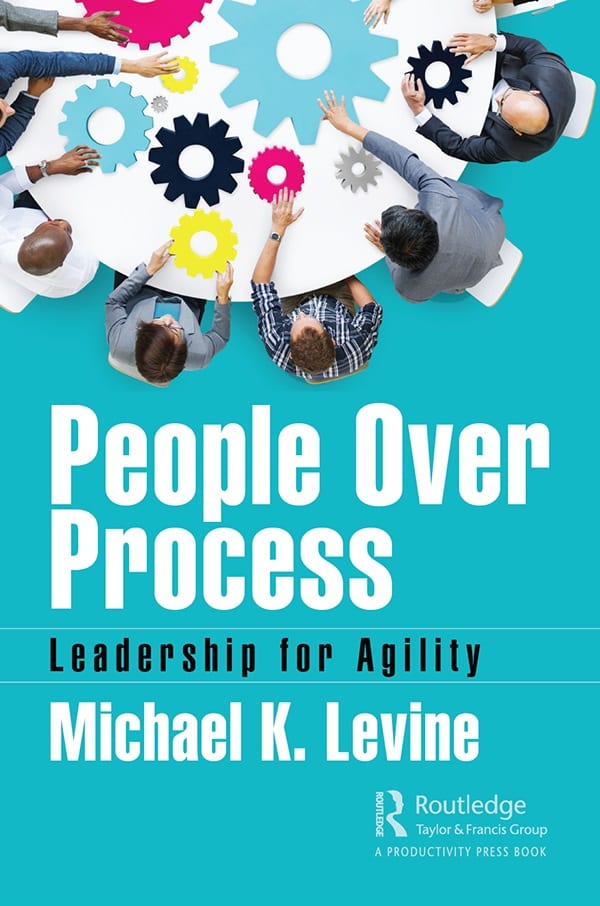To Drive Digital Transformation, Focus on People

Today’s changes are not unusual in scope or pace. Consider, for instance, the changes in the last several decades: the invention and rapid propagation routine affordable air flight, the explosion of trade and globalization, and the invention of computing, networks and the Internet. New financial innovations enabled both historic global economic growth and cascading global financial failures. These revolutionary developments required equally revolutionary changes, including more truly global firms, whole new industries, new ways of organizing enterprises (think first GM and then GE), new ways of working (email, virtual global teams), and more.
Today’s digital revolution brings three new components: ubiquitous networks that connect people, devices, and systems instantly and globally; the data that these networks collect and the ability to store that data cost-effectively; and processing power and techniques that enable us to analyze and act on the available data. These new capabilities connect to the work we’ve done over the past several decades inside our enterprises to automate processes with tools — such as accounting systems, supply chain, call center, and such. We need to understand the possibilities and threats posed and act on the new potentials to deliver value to customers in a profitable way. That requires a new way of thinking about people and leadership.
The nature of large-scale digital is, I believe, something new in human endeavor. Humans have been able to organize large numbers of people into a common mission and execute amazing things, from conquering armies to astonishing constructions project like the pyramids. Digital is something quite different: it How do we get hundreds or thousands of people to come up with thousands of ideas and decisions with little physical manifestation (software), and align all into a single solution that runs and meets valuable needs? The hierarchical and process-driven methods of the past won’t work well.
But there’s a model of leadership that will. To build great invisible structures out of thousands of ideas that work together and deliver value in the real world, in a fast-paced, highly competitive environment where the tools, people, and problems are all new and at enormous scale, we need leadership that delivers three imperatives:
- Rigor In dealing with the uncertainties driving agile adaptive process control, there are many crucial decisions to be made. Rigor means clearly defining each decision, gathering and considering facts, thoroughly considering options, and making clear decisions. Without rigor, alignment has to be command-driven. And efficiency in pursuit of decision reached without rigor is just doing the wrong things more quickly.
- Alignment Teams must work in a way that gets the best input from all members, and gains understanding and commitment around common goals, schedules, methods, and decisions/directions of all kinds. In this new process of invisibly codifying ideas, perhaps dozens or more team members make many decisions every day that are difficult, if not impossible to control. How do we get everyone’s head in the game, draw out the best in each team member, and gain strong alignment on the way ahead?
- Efficiency People’s time is a valuable commodity not to be wasted. From creating a meeting agenda to establishing a standard format for decision documents to holding in-person meetings instead of meetings by phone, there are proven techniques to drive efficiency that can be learned and adopted. Above all, driving the use of these techniques depends on the stance of leadership. Leadership should make it clear that they are offended by wasting time, as it’s also wasting energy, resources and brain space.
We need this kind of leadership from top to bottom on in our enterprises: on each team, in each role, at every level; whether organized around project or products, agile scrum or lean start-up; whether teams are fully co-located or spread out globally; whether focused on apps, apis, or IoT. We need it whether we are transforming, adding to, or combining a digitized environment. Improving our leadership may require a long haul for your organization, or it may just mean a continuation and intensification of current practices. In either case, consider these three focus areas:
- Frameworks Frameworks are the mechanisms through which a leader facilitates a team to accomplish rigor, alignment, and efficiency. In this context frameworks include physical space (e.g., agile studios), tools (communication such as Slack or Jira, etc.), organizational structure (such decentralizing and aligning technology to business areas more effectively), and governance. Frameworks also include cultural practices such as Toyota’s A3 problem-solving approach and Amazon’s six-page memos. Cultural insistence on extraordinarily well-prepared and conducted meetings is another valuable framework.
- Leader Behavior Leaders must reinforce the focus on rigor, alignment, and efficiency. Don’t accept poorly planned and conducted meetings. Reject proposals that do not include options and supporting facts. Help teams form, adjust, and get and share needed information. Clear paths by establishing relationships with leaders of business areas or partners on which your teams depend. Fight waste and inefficiency in all incarnations. Don’t cripple your teams by over-standardizing! And be involved with your teams, available to make decisions when they need your help.
- Training Leadership can be taught, though it’s not easy or cheap. Many leadership skills required for digital success are similar to those taught to meeting facilitators. Our leaders need to be able to solicit ideas effectively, examine them in team context, and gain agreement on next steps in a way that persists when the meeting ends. Beyond these “soft” skills, we need to encourage what Toyota calls “Towering Technical Competence”: certainly in the technical areas of data, networks, development processes and such, but also in customer understanding, testing, process engineering, and partner negotiations. Don’t rely on just centralized training — managers must be deeply involved in the development of their team members and hold them accountable to demonstrate ongoing mastery.
I recently heard a senior leader ask when the digital transformation they were undertaking would be done — as if there’s a finite point of completion. But this isn’t a rigid set of specific transformational steps. It’s an unrelenting focus on developing the best leaders at every level of your enterprise. The results will be amazing, rewarding, and fun.
About the Author














Leave a Reply
Want to join the discussion?Feel free to contribute!